"I used to never wear anything that accentuated my waist, but this wraparound tie excites me."
"Bike shorts are the best thing to happen to the plus-size community — they’re comfortable and flattering. And when styled with heels, it’s a lewk."
"I’ve always been a tomboy, but now that there are more options in my size, I’ve started to hit the dress section — and realizing I look good in them."
"I’ve never owned knee-high boots because they never fit me. It was a style I didn’t know I could wear, but now, thanks to these Marc Fisher boots, I’m going to be wearing them all season long."
"As a plus-size Black woman, I felt unattractive growing up, so high school me wouldn’t have worn this leather jumpsuit because it’s not overly feminine. Now, I wear whatever I think I look beautiful in, whether it’s femme, masc, or a mixture of the two."
"I’m realizing that most colors, like this bright cobalt blue, look good against my skin."
"I love a wide-leg cut because it’s comfortable. In high school, I wouldn’t have worn anything that had extra fabric for fear of looking fat or frumpy, but these jeans look cool on me, and that’s what’s important."
It’s wild to think that a decade ago, sartorial “dos” and “don’ts” were widely broadcasted as accepted axioms: you couldn’t style navy with black, you couldn’t mix gold and silver jewelry, you couldn’t wear white after Labor Day. And when it came to what was labeled as the “plus-size” community, those arbitrary rules were even more ridiculous: you couldn’t wear bright colors, you couldn’t wear horizontal stripes, you couldn’t wear anything remotely revealing — the subtext being, you shouldn’t draw attention to yourself, you shouldn’t take up space. Coupled with the lack of access to clothing in larger sizes, it sent the message that you need to be smaller in order to participate in fashion, that you need to look a certain way to have a sense of style.
It’s even wilder, still, to think that these exclusionary barriers continue to exist in the industry, with some retailers refusing to embrace size diversity or offer all styles in larger sizes in stores. When it comes to size inclusivity, there’s still a long way to go — but thankfully, more and more people are fighting against outdated norms and unapologetically reclaiming their personal style. In partnership with QVC, the retailer that has been empowering women by championing size inclusivity through on-trend offerings for the last 30 years, we tapped two Refinery29 editors — Nneka Ugochukwu and Chichi Offor — to share the items they thought they “couldn’t” wear, what it took for them to unlearn that thinking, and how they’re discovering their fashion preferences on their own terms. Read their stories below.

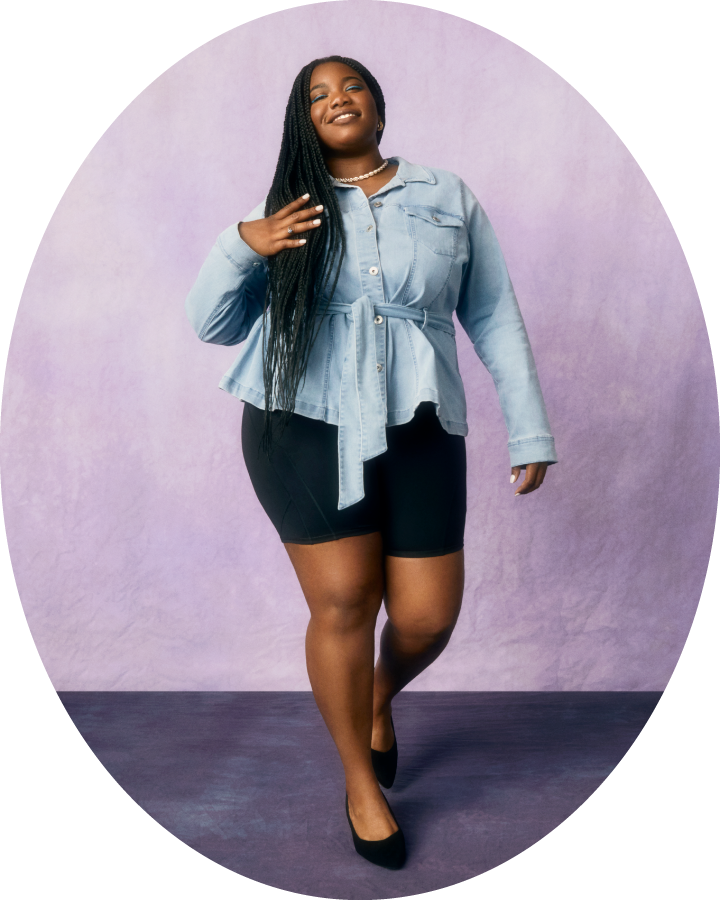
My body journey started… “During that awkward puberty phase in middle school. Everyone goes through it, but I was overall a lot bigger than everyone else; I was full-sized even though I was a child. Wearing uniforms made me hyper-aware of my body, because I didn’t have a choice in how I dressed, so I gravitated toward baggier silhouettes to hide parts of me.”
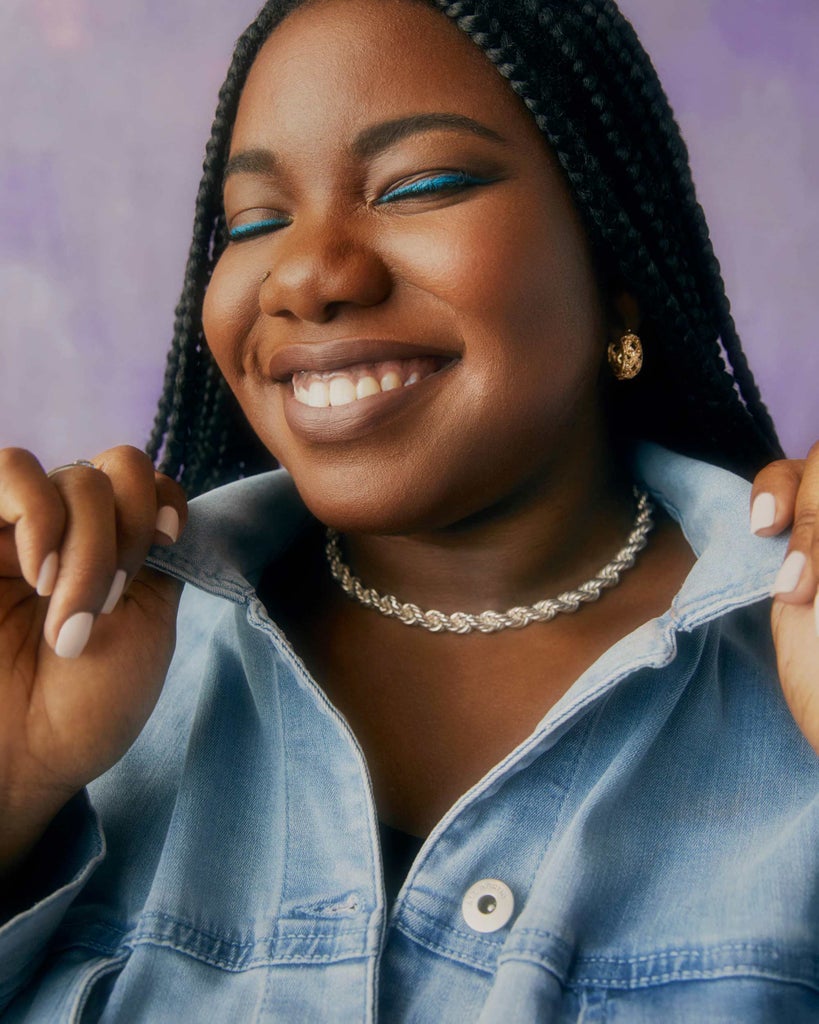
How I felt excluded from fashion: “In high school, I couldn’t shop where everyone else shopped. It served no purpose to go to the mall with my friends knowing that I couldn’t actually find something. Not only did retailers not offer extended sizes but whatever they did offer was ugly — clothing that wasn’t made for a young teenager but for an old lady, like muumuus, boot-cut jeans, and not-cute tops. It wasn’t until online retailers began to extend their size range that I found things that fit me, but even then not all items had extended sizing.”
I felt like I couldn’t wear: “Crop tops, bathing suits (I didn’t wear a bathing suit until college; as a child, I wore T-shirts and shorts to the beach), anything that showed my arms, and bright colors. For a long time, Black women’s role in society was to be seen and not heard, to not draw attention to ourselves, so being a plus-size dark-skinned Black woman, I ‘couldn’t’ wear bold, bright colors. Over time, that narrative began to change, with Black celebrities and content creators wearing whatever they wanted.”
It was perpetuated by… “Magazines, television, the internet — MySpace, Tumblr, Vine, YouTube — that had content like what plus-size people should wear versus what they shouldn’t.”
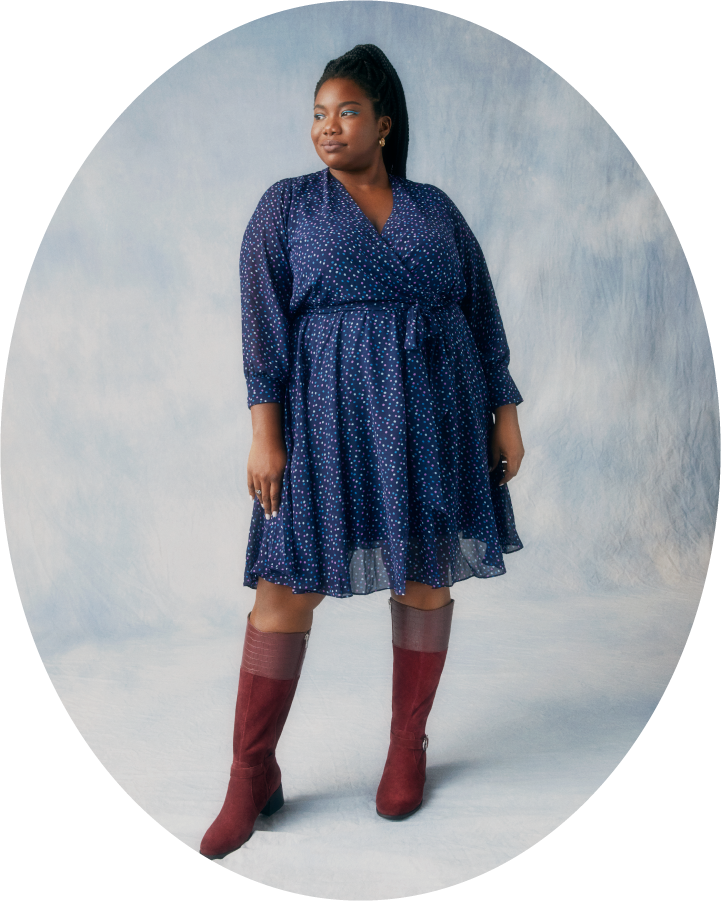
How I’m unlearning that kind of thinking: “It wasn’t until I got to college that I decided I just did not care anymore, that I was going to wear what I wanted. I would order things online to figure out what worked for me, and it gave me control over what I wore. There’s a sense of freedom being in college and getting to decide: This is who I want to be; this is what I want to wear.
“As a plus-size woman, I’m more prone to body dysmorphia so seeing things that aren’t technically there, which shapes the way you view yourself in the world. So, for a long time, I ordered clothing that was too big for me, or I was conditioned to believe that a dress would look better on a size 6 model versus a size 16 model. It’s a hard process to unlearn, and it has taken a while — I don’t think anyone is ever going to be completely healed from the experience because it’s traumatic, operating in a world that wasn’t designed for you. Access was the problem for a very long time and now that I have access, it’s more about: What’s my style? What do I like to wear? As opposed to wearing what is provided to me.”
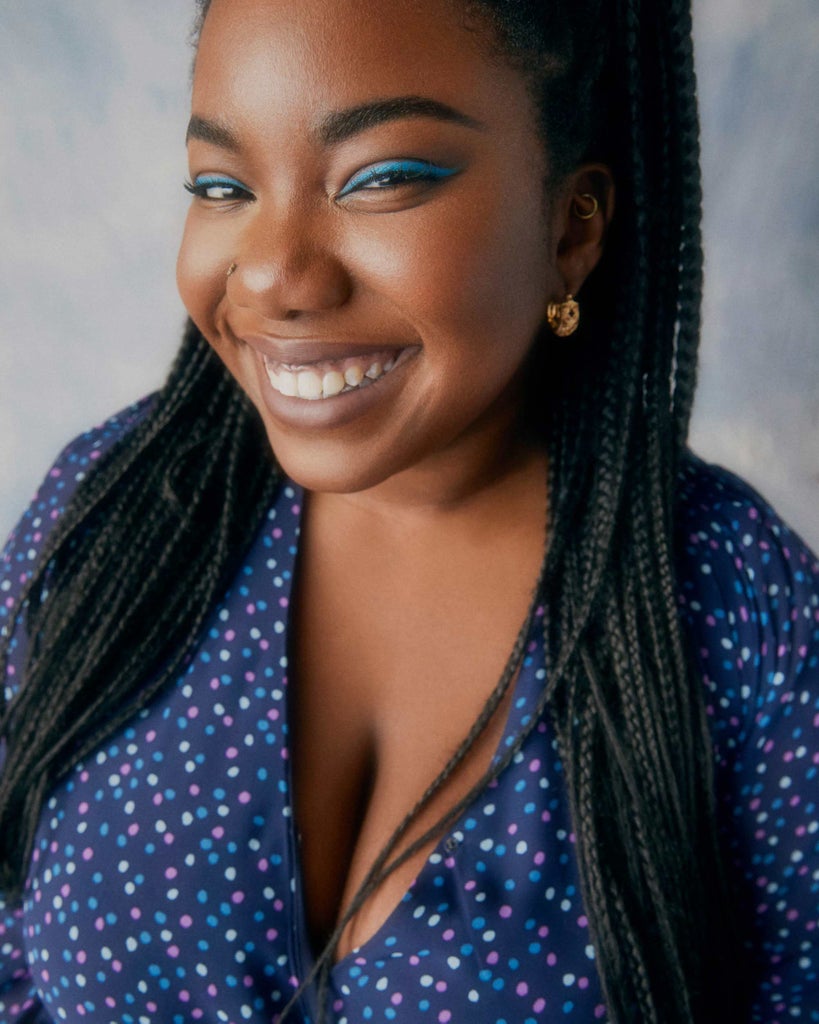
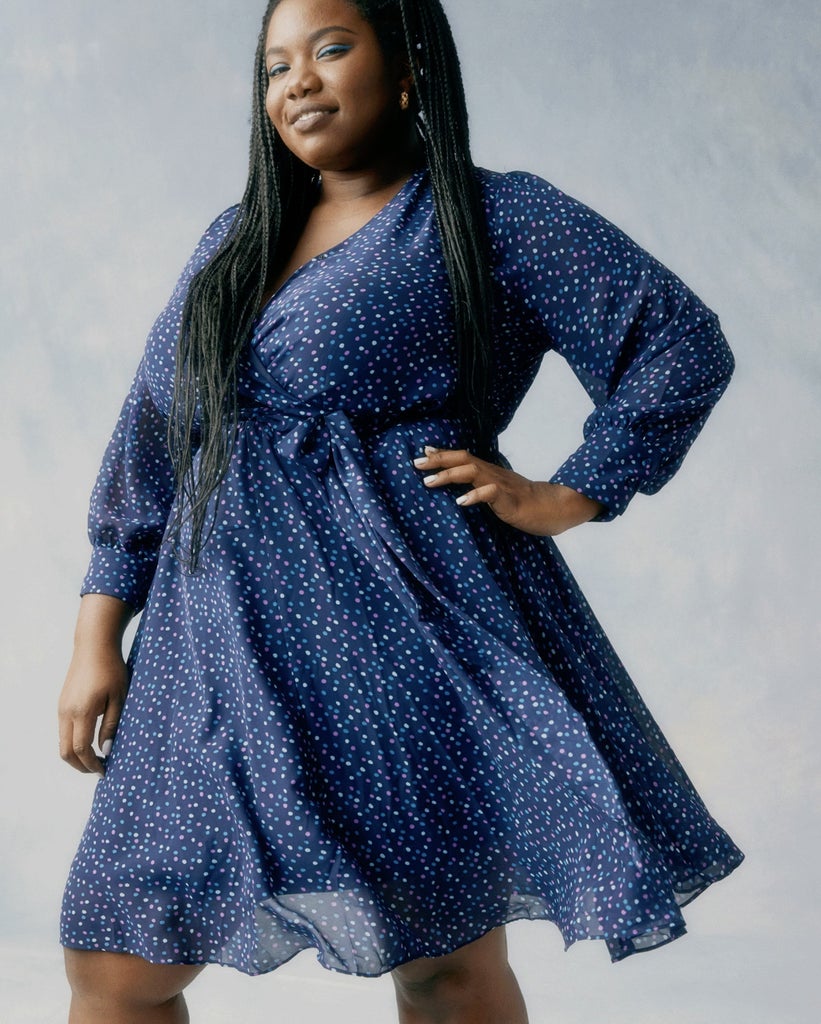
My personal style now: “I’m definitely a jeans and a T-shirt type of girl. I’ve always been a tomboy, but now, I’ve started to hit up the dress section; I’ve learned to appreciate my body in dresses now that there are more options in my size, like this one by J Jason Wu that is really flattering. I’m realizing I look good in dresses. Same with anything that accentuates my waist — I used to never wear something with a wraparound tie, but now it excites me. I also like crop tops, swimsuits, and looks that hug my body when I’m in the mood. I’m more open to trying things outside my comfort zone.”

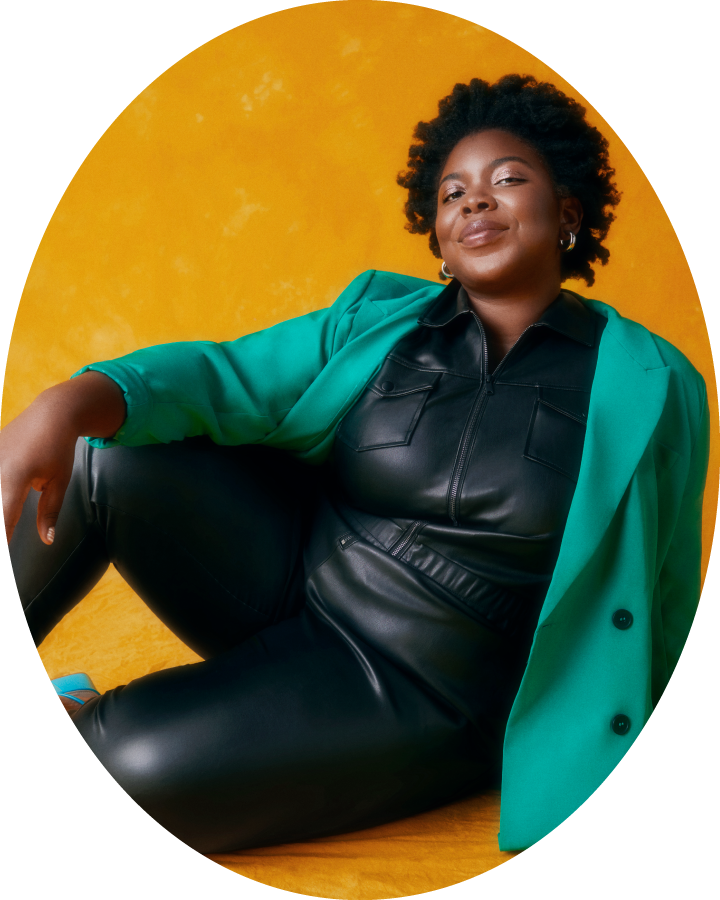
My body journey started… “As early as second grade. I was in dance for a bit, and I remember the teachers making a big deal about me not fitting in the clothes they have. For most of my life, I’ve just lived in a bigger body. I’ve had a weird relationship with my body because of diet culture; I’ve been on some form of a diet for as long as I can remember, but I officially stopped that in 2019.”
How I felt excluded from fashion: “Everyone would wear certain mall brands, but they didn’t carry my size, so I couldn’t participate in that sense. It meant wearing different things from my peers. When you step into a store and there aren’t any clothing options, or none that look good in your size, and you can’t wear the same things as your friends, you become aware you are different. That awareness, especially when you’re younger, brings a level of insecurity because you want to fit in.”
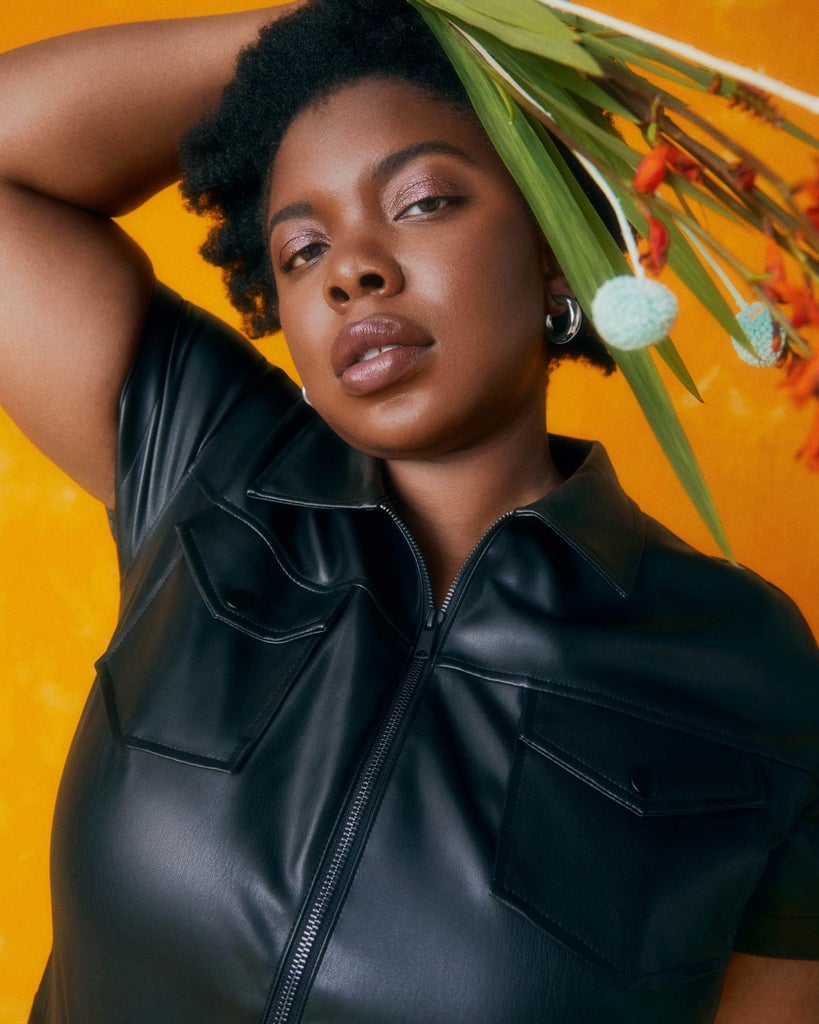
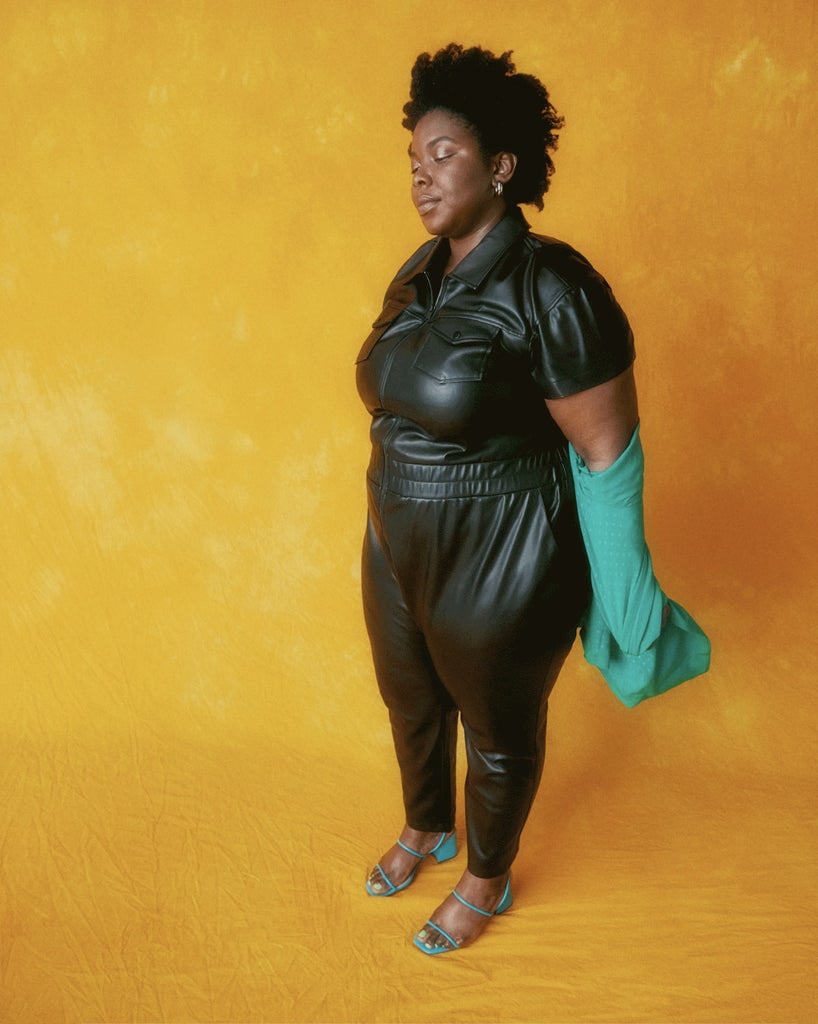
I felt like I couldn’t wear… “Loud colors (bright blue, bright greens, yellows, oranges, reds) and cool patterns (checker or gingham). I also avoided anything that was form-fitting or sexy, like lace bodysuits. I avoided oversized garments because they aren’t the most ‘flattering.’ I also didn’t wear crop tops, and I definitely avoided wearing a bikini for most of my life (I wore my first bikini last summer).”
It was perpetuated by… “Society in general. I read a lot of teen magazines growing up, and there were articles like, ‘How To Dress For A Curvy Body,’ with rules like ‘don’t wear horizontal stripes because it will make you look wider’ or ‘wear darker colors because it’s more flattering.’ As a first-generation Black woman in a predominantly white area, I stuck out, but being bigger, too, there was just so much attention on me. I felt like I didn’t fit in, which meant overcompensating for being different by going on various diets, making sure people knew I ate healthy and organic, and dressing in overly femme styles.”
How I’m unlearning that kind of thinking: “The body-positivity movement on Instagram was a big help. In college, I followed plus models who wore cute outfits — short shorts, fun patterns, loud colors. Discovering this online community of plus- and mid-size people wearing what they wanted and reclaiming personal style for themselves, was really inspiring. It gave me permission to just be, and it made me realize I never needed to look a certain way to dress the way I want to.
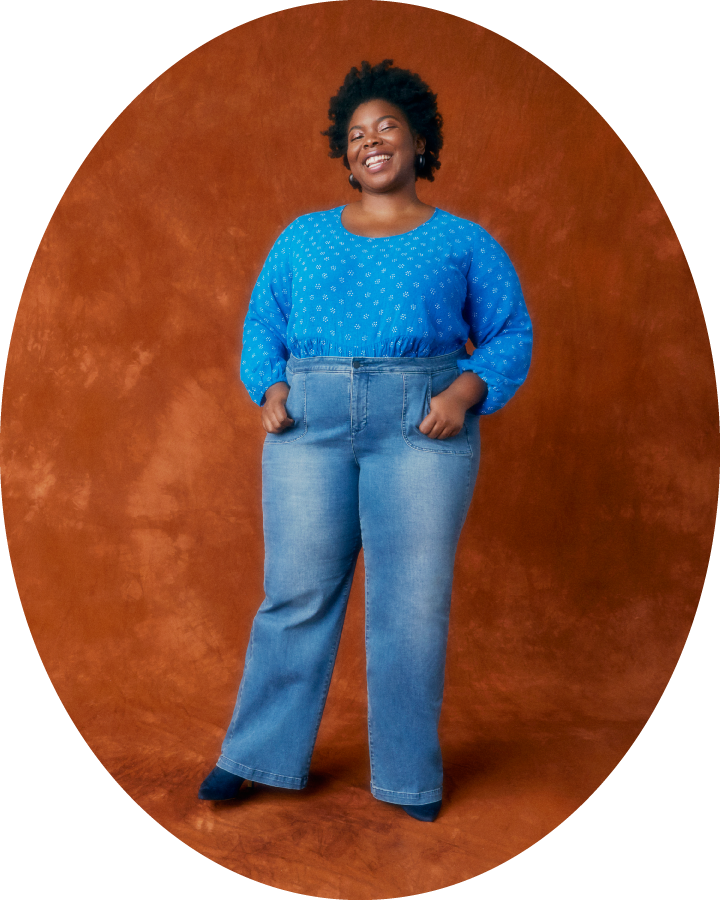
“It’s still a process, though. After unlearning fatphobic body standards set by society, I have definitely felt more free to dress the way I want without the negative noise from family, media, and society. If you’re a Black woman and plus size, it’s radical to just exist and be okay with yourself. I do get nervous when I’m dressed a little louder, but then I get a compliment or I realize I look cool, and those moments make it worth it.”
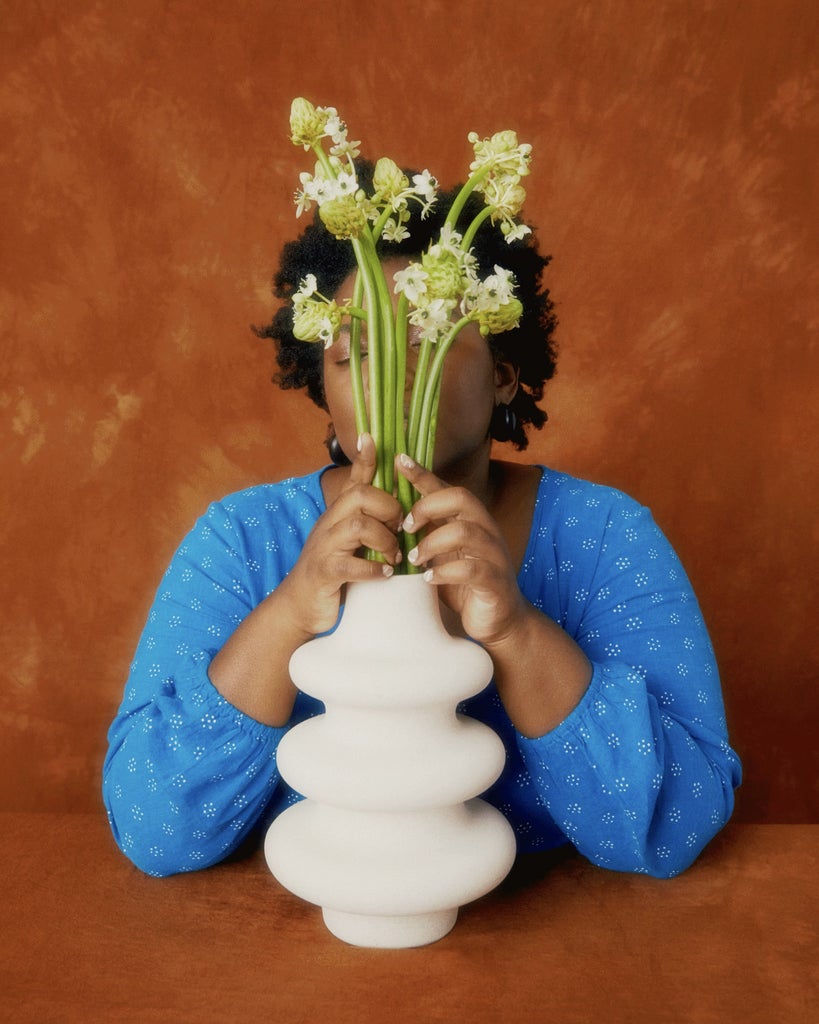
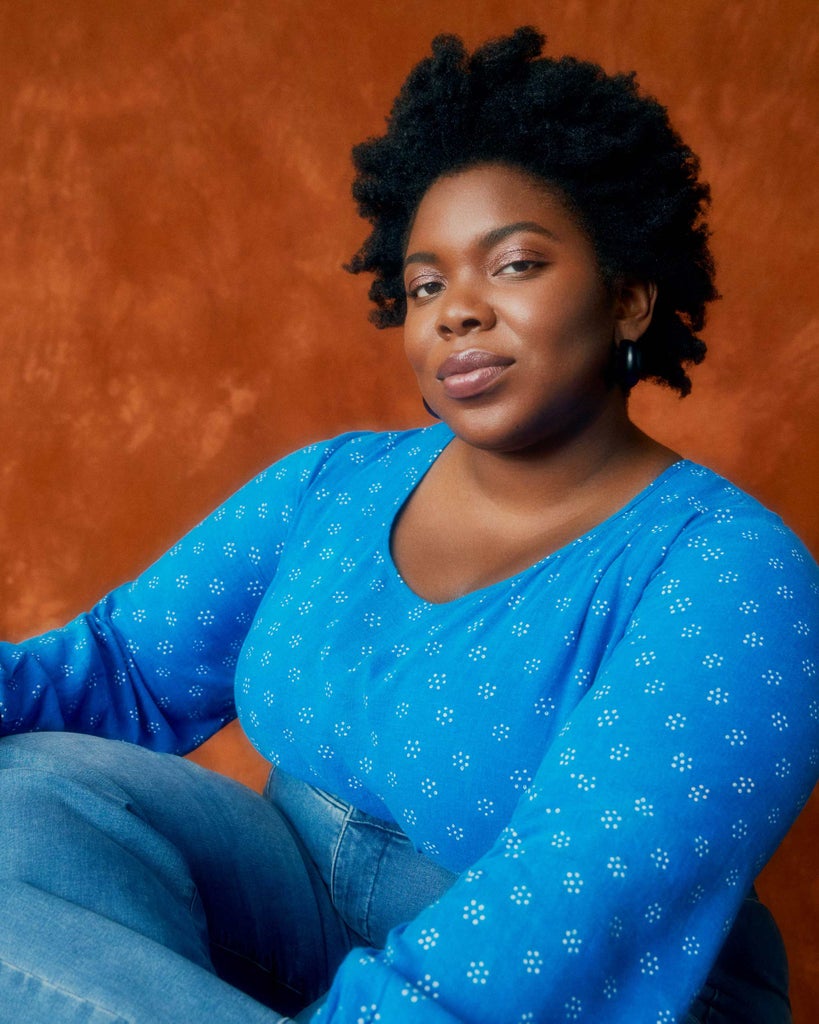
My personal style now: “I’ve always been interested in personal style, because I can use clothes in a way to manipulate an image people might have about me. As I’ve gotten older, I no longer care what other people think about how I should live my life or how I should dress. As long as I feel great in something, then it doesn’t matter what people say. Now, I love wearing a lot of different colors (I’m realizing that most colors look good against my skin, like this cobalt blue top from Candace Cameron), mixing patterns, and wearing textures (velvet is really fun). I love a crop top. I went to Miami and bought form-fitting clothes, and it was fun to experience that for the first time.
“This is the closest I’ve been able to express myself through fashion (there are a lot more options now), being able to experiment with different aesthetics, whether that’s femme or masc, like this cool leather jumpsuit by All Worthy Hunter McGrady. Style is so very personal, and as more individuals take that power back from negative media and toxic advice, the more we, as a whole, can be free.”
Like what you see? How about some more R29 goodness, right here?


No comments:
Post a Comment